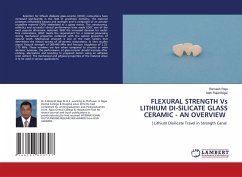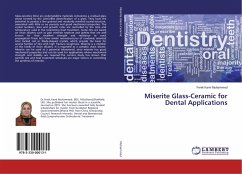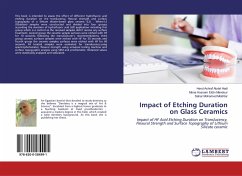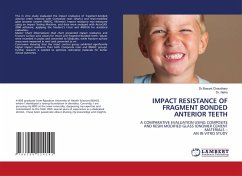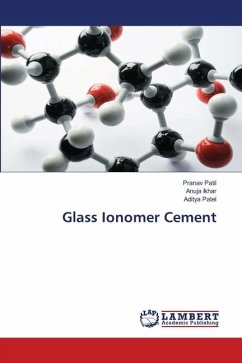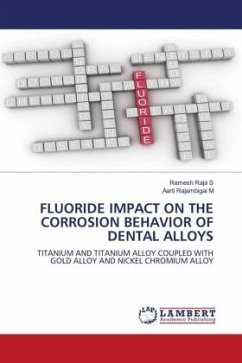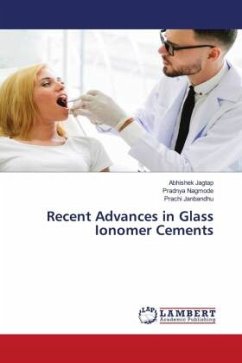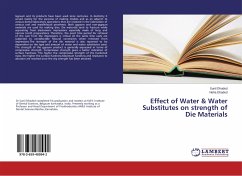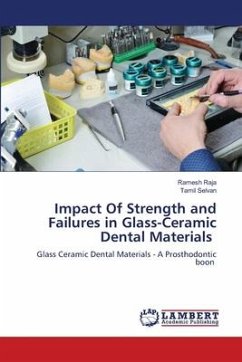
Impact Of Strength and Failures in Glass-Ceramic Dental Materials
Glass Ceramic Dental Materials - A Prosthodontic boon
Versandkostenfrei!
Versandfertig in 6-10 Tagen
29,99 €
inkl. MwSt.

PAYBACK Punkte
15 °P sammeln!
Selection for lithium disilicate glass-ceramic (LDGC) restorations have increased significantly in the field of prosthetic dentistry. The material possesses remarkable beauty and strength and is composed of an acicular crystalline material (70%) embedded in a glassy matrix. The translucency, esthetics and successful clinical performance have made LDGC one of the most popular all-ceramic materials. With the increased demand for metal-free restorations, LDGC meets the requirement for a material possessing strong mechanical properties combined with the optical properties of natural teeth. Mechani...
Selection for lithium disilicate glass-ceramic (LDGC) restorations have increased significantly in the field of prosthetic dentistry. The material possesses remarkable beauty and strength and is composed of an acicular crystalline material (70%) embedded in a glassy matrix. The translucency, esthetics and successful clinical performance have made LDGC one of the most popular all-ceramic materials. With the increased demand for metal-free restorations, LDGC meets the requirement for a material possessing strong mechanical properties combined with the optical properties of natural teeth. Mechanical strength is one of the main factors that determines the clinical success of all-ceramic restorations. In vitro studies report flexural strength of 360-440 MPa and fracture toughness of 2.25-2.75 MPa. These numbers are low when compared to zirconia or even alumina; however, the performance of glass-ceramic should increase after etching, silanization and bonding to prepared dentin using anadhesive resin cement.



